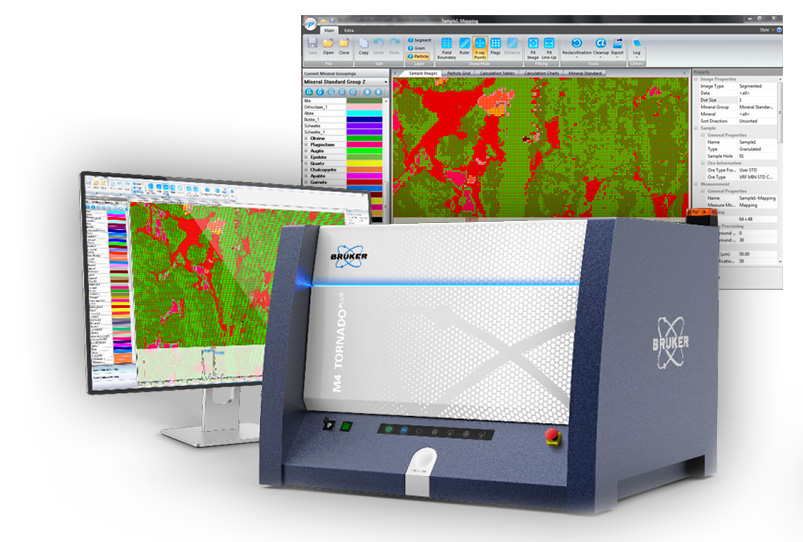Compared to alternative methods


The Bruker M4 TORNADOAMICS is an automated mineral analyser for geology, mining and mineralogy. Analyse both thin sections and large geological samples such as drill cores and hand samples down to micrometer scale. Acquire mineral phase results quickly, and determine modal mineralogy, mineral distribution and calculated assays.
Compared to alternative methods
Thin sections, drill cores, hand samples and more
For higher throughput
The Bruker M4 TORNADOAMICS brings together:
With a light microscope, results can be acquired quickly, but the technique requires sample preparation and an experienced mineralogist. Minerals can also not be identified with certainty.
SEM (Scanning Electron Microscopy) with EDS (Energy Dispersive X-ray Spectrometry) can also be used to determine mineralogy. However, SEM-EDS mineral analysers are expensive, with high running costs. There is extensive sample preparation, involving carbon coating.
Sample preparation takes time and money. Once the sample is prepared, SEM-EDS can take a day to measure more than a couple of square centimeters, even with the fastest systems.
Micro-XRF overcome these limitations. Large samples can be analysed quickly; measure areas up to 190 mm x 160 mm with a high spatial resolution down to < 20 μm. This gives you information about the statistical and spatial distribution of minerals across larger samples much faster than alternative methods. In addition to this, there is little or no sample preparation.
While traditional quantification methods can take hours, AMICS software is built to handle large data sets, taking only minutes to reprocess sample files with over 500,000 pixels – containing image, spectra, mineral identification and classification data.
We offer a range of instruments for elemental and mineral analysis, mapping and imaging in geology and geoscience.
How to analyse mineral composition with micro-XRF, to understand the origin and formation of rocks in geoscience. This information is useful in various fields of geology and mining, including aluminium, steel, gold and diamonds. Blue Scientific is the official distributor for Bruker Micro-XRF in the UK, Norway, Sweden, Denmark, Finland and Iceland. For more information or […]
Micro-XRF has many applications in geology for elemental and mineral analysis, and is faster and more cost-effective than alternative methods.
A short introduction to the incorporation of visual and quantitative geochemistry into mineral exploration workflows with Bruker’s M4 TORNADO micro-XRF and the AMICS automated mineralogy platform.
Recorded webinar